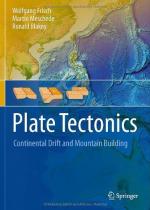|
This section contains 399 words (approx. 2 pages at 300 words per page) |
The Theory of Plate Tectonics
The Earth's surface is broken into many different sections, called plates. When the plates force a high amount of pressure on each other, its causes earthquakes, volcanoes to erupt, and the formation of mountains. The area where two plates meet is called plate boundaries. Plate tectonics is a combination of two ideas, sea-floor spreading and continental drift. The creation of new oceanic crust at mid-ocean ridges is called sea-floor spreading. In 1969, spreading plate margins became part of the theory of plate tectonics. This theory explains not only about how ancient crust is destroyed along destructive plate margins, but it also explains how new ocean floor is created. Sea-floor spreading is also the movement of crust away from the mid-ocean ridges.
When continents over Earth's surface change position, it is called continental drift. One plate is destroyed when continental and oceanic plates collide. Convection currents will "carry" the oceanic plate back to the mantle, after going under the continental plate. When the oceanic plate slides against the underside of the continental plate, it causes earthquakes. There are nine major plates. The major plates included the Pacific Plate, the South American Plate, and the Eurasian Plate. The United States and Alaska are located on the North American Plate, but Hawaii is on the Pacific Plate. We have solved many of the Earth's mysteries by understanding plate tectonics. When the continents and oceans move about the surface, it is similar to passengers on a raft. Plate tectonics have helped to make sense of Earth's movement. This theory has helped scientists to predict many large Earthquakes.
|
This section contains 399 words (approx. 2 pages at 300 words per page) |


